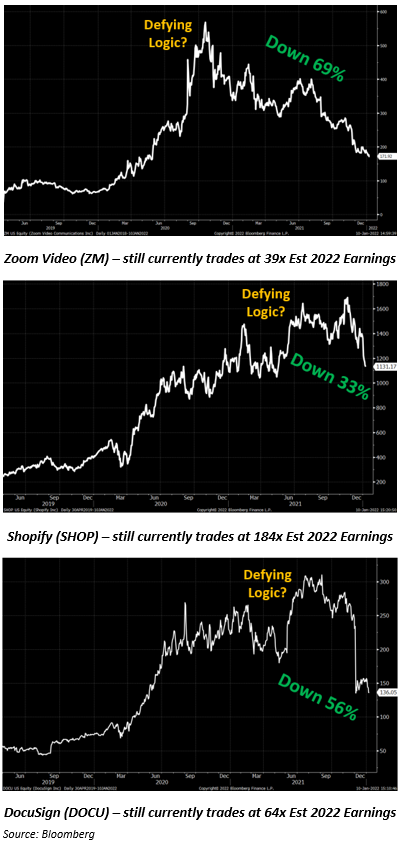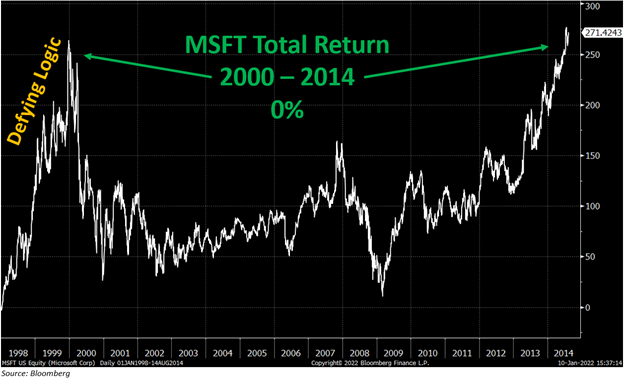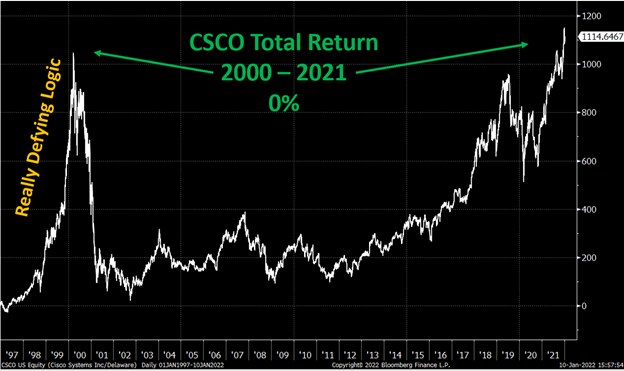For the 12-month period ending in December, the CPI (Consumer Price Index, a measure of inflation) increased 7%. The past few months have seen the largest increase in this measure in forty years. This was not much of a surprise to anyone and there are more than a few that believe the CPI number actually understates the true increase in the cost of living.
Yes, prices are higher than they were a year ago. And they might even be higher a year from now.
Yes, wages are higher than they were a year ago. And they might continue to go up.
But, in our opinion, this is NOT the 1970s and we are NOT headed for a decade of runaway inflation and double-digit interest rates.
Having said that, there are some unique issues in our world today that might cause prices to be higher for a little while longer:
- Deglobalization – For the past 30+ years, nations all over the world have benefitted from globalization, by having products manufactured in countries with the lowest cost of labor. In addition, the unprecedented 75-year absence of world wars lulled all of us into complacency, and “just in time” inventory became commonplace. However, icy relations between the U.S. and China, combined with the pandemic-related supply-chain disruptions, are making companies re-think all of this.
- Labor force reduction – As Baby Boomers hit retirement age (approximately 10,000 people turn 65 every day) and gradually leave the workforce, they are not being replaced at the same rate.
- Shifting energy policies – Decreased investment in fossil fuels (which is relatively cheaper today) and increased investment in green energy (which is relatively more expensive today).
- Fiscal spending – Could we write about this every month? Federal stimulus of all sorts (monthly checks, child tax credit, suspended student loan payments) did exactly that . . . stimulated the economy. Maybe too much, creating an unexpected boom in consumer demand. Combine that with the supply chain disruptions and you have higher prices . . . temporarily.
This may continue for a few months (maybe more), possibly a year (maybe less), but at BCWM our outlook is for much lower inflation with occasional moments of deflation.
Just as there are some unique issues contributing to inflation today, there are conditions that will lead to lower inflation in the not-too-distant future:
- Demographics – Even though demographics are temporarily driving inflation higher (see “Labor force reduction” above), the same will ultimately drive it lower. In the 70s, Baby Boomers were a massive population accumulating “stuff” (homes, cars, washers, stereos, etc.). That group is not very interested in acquiring as much today. They are sitting on their wealth (spending as needed), and thus, they represent the future largest transfer of wealth ever experienced on this planet . . . wealth that will be passed on to the millennials.
- Fiscal spending – Even though government stimulus checks have been inflationary (see “Fiscal spending” above), it is our view that outsized government debt ultimately contributes to slower economic growth, lower inflation, and lower interest rates. Stealing from the future to live lavishly today is seldom a good formula for long-term economic prosperity.
__________________________________________
During the past two (pandemic) years, many stocks (primarily technology stocks) hit prices that sometimes seemed to defy logic. Good companies, mind you. With good products or services. But ridiculous prices? Possibly. (Probably).
Here are a few examples:

These charts remind us of the “dot-com” bubble of 1999–2000, when investors (we use that term loosely) were buying stocks merely because they were “going up.” Stocks were being purchased for the sole purpose of selling them to someone else at a higher price . . . very soon.
Some were very good companies that were just overpriced. Some were not-so-good companies that were WAY overpriced.
One such overpriced good company was Microsoft (MSFT), which had $20 billion in revenues in 1999. This last year, it had $168 billion in revenues, so it’s obviously done very well the past twenty-one years.
But the stock price? Different story. If you purchased MSFT in 1999, at the peak of the dot-com bubble, your total return for the next fourteen years was zero.
ZERO! And that includes dividends!!

Since then, MSFT has done well enough that your return over the entire twenty-one-year period is around 10% per year. But fourteen years is a long time to go and earn nothing.
Another great company that was a horrible investment if you bought it at the wrong time . . . Cisco Systems.

If you bought Cisco (CSCO) at the dot-com high, you wouldn’t have made your money back until LAST YEAR (2021)!! Cisco has turned a profit every year for the past twenty years, growing its net income by 600%. But you still made 0%.
You can buy a good stock and lose money because you paid the wrong price for it. We’ve written about this before.
__________________________________________
And then there were the insanely speculative assets . . .
Gee, if you had only known, you could have invested all your money in AMC Entertainment (AMC) last year and made a 1,183% return. That crippled movie theatre chain (headquartered in Kansas City, no less) was on the verge of bankruptcy at the end of 2020 because COVID had robbed it of its customers. And the business didn’t appear to be booming any time soon enough to save it.
Its stock was trading at a measly $2.12 per share and many “short-sellers” thought it was overpriced at that.
So what saved AMC? Well, among other things, Robinhood traders in cahoots with each other on a Reddit forum. Cheering each other on, they managed to drive the stock price to $27.20 at year end.
However, that’s not the entire story. They actually drove it as high as $62.44 in early June (a whopping 2,850% return in five months). That means some investors actually LOST 76% if they purchased at the wrong time.
Fun, huh?
You also could have made a killing in Gamestop (GME) last year as it increased 687%, rising from $18.84 to $148 per share at year end. But, like AMC, GME traded much higher during the year ($347), which means some investors actually lost 57%.
Bitcoin? Pretty much the same story.
Trading stocks on smart phones with no commissions has created a Las Vegas casino atmosphere for “investors” ¾ an atmosphere that is ultimately going to leave many naïve traders financially bereft.
Rest assured that BCWM does not view the investment arena as a Las Vegas casino. We will never lose sight of the fact that “investing” is a craft . . . and that in a properly diversified portfolio, the aim should always be to take the least amount of risk necessary to achieve one’s financial goals.
So if you didn’t make over 1,000% last year because you were diversified, what rate of return could you have reasonably expected?
- The Standard and Poor’s 500 Index was up 28%
- The Dow Jones Industrial Average was up 20%
- The NASDAQ was up 22%
- Gold declined 7%
- A diversified basket of foreign stocks went up about 7%
- The bond market (in general) was slightly negative for 2021
Depending upon how much risk you need to achieve your goals, your portfolio performance should have been a combination of those different asset classes.
This information is provided for general information purposes only and should not be construed as investment, tax, or legal advice. Past performance of any market results is no assurance of future performance. The information contained herein has been obtained from sources deemed reliable but is not guaranteed.
